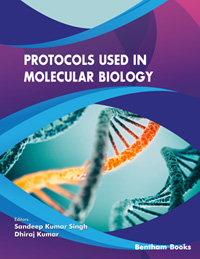Abstract
The regulation of transcription and translation of a gene under a given environment is dependent on several factors and epigenetics is one such factor, responsible for the differential expression of several genes in health and in various diseases. DNA methylation, an important epigenetics mechanism has been shown to play a vital role in numerous cellular processes, and the abnormal patterns of methylation have been linked to the number of human diseases. CpG islands, a short stretch of DNA enriched with CpG sites in the 5’ end of a gene, although remains unmethylated but tends to methylate aberrantly upon certain environmental exposures. The methylation of the promoter region bearing transcriptional start sites of those genes that encodes tumor suppressors such as tumor protein p53, retinoblastoma-associated protein 1, tumor protein p16, breast cancer 1 and many more result in the reduced expression of these genes and have been implicated in a large number of cancers like retinoblastoma, colon, lung and ovarian. A growing number of human diseases have been found to be associated with the aberrant DNA methylation. Hence, a deep insight into the individual’s epigenetic profile is the need of the hour. Several approaches have been developed to map DNA methylation patterns genome-wide. Some of these approaches include enzymatic digestion with methylation-sensitive restriction enzymes, the capture of 5-mC by methylated DNA-binding proteins followed by nextgeneration sequencing and methyl-DNA immunoprecipitation followed by sequencing of precipitated fragments. However, this chapter is going to describe the most recommended method for studying DNA methylation pattern, the method based on bisulfite sequencing. The bisulfite treatment of DNA converts unmethylated cytosine(s) to uracil(s), which are subsequently amplified as Ts by PCR. Hence, the bisulfitetreated DNA has mutations specifically at unmethylated Cs that can be mapped by Next-Generation sequencing.
Keywords: Bisulfite conversion, CpG island, DNA methylation, Deep sequencing, Epigenetics, Genomics, Immunoprecipitation, Next-Generation Sequencing, PCR, Retinoblastoma, Restriction enzymes, Transcription, Unmethylated.






















